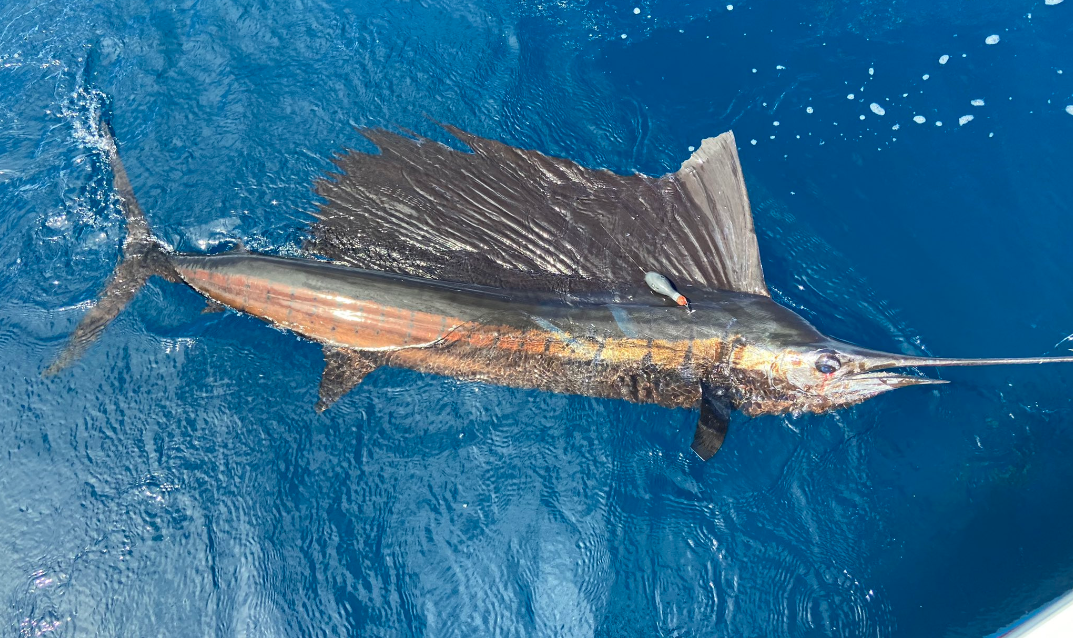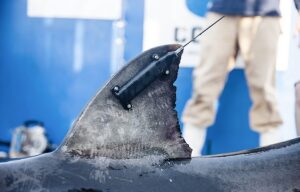
What Our Fish Tags Can Do
Wildlife Computers gives you the technology you need to meet the requirements of your project, no matter what kind of fish you are studying. We offer a variety of shapes and sizes using pop-up, pop-up-archival, Argos, GPS, or Fastloc® technologies. We also offer a myriad of data products that allow you to monitor everything from physiological functions to environmental conditions.
If you are looking for detailed habitat and behavioral information with fine-scale resolution or horizontal and vertical movement, we can give you time-series data, Time-At-Temperature, Time-At-Depth, Activity-Time-Series, Mixed Layer, and more.
Our Pop-up Archival Transmitting tags (PAT or PSAT) also provide fisheries-independent information by allowing the remote recovery of data from non-surface-oriented marine animals. Researchers attach the tags externally and program release when certain parameters are met. Upon release, the tags float to the surface and transmit to the Argos satellite network. Pop-up tags are used to study animals such as tuna, sharks, marlin, swordfish, halibut, rays, and eels.
Benthic species can remain stationary for days, making it difficult to deduce mortality from our typical data sets—depth, temperature, and light. Our unique Benthic sPAT adds tilt to help measure activity (or inactivity) in order to help determine mortality.
Like our other pop-up satellite tags, sensors collect data during deployment and archive it onboard the tag. Then, on a preset date, the tag releases from its host animal, surfaces, and uploads a summary of the archived data to the Argos satellites. The Wildlife Computers Benthic sPAT tags work on species like halibut, sole, flounder, turbot, and rays.
If you are studying large pelagic species that periodically bask, consider a Wildlife Computers towed tag. Towed tags are attached to the animal by a long tether and dart anchor. They are positively buoyant allowing them to float at the surface while trailing behind a slow-moving animal. SPOT and SPLASH10-F towed designs have been used extensively on manta rays and whale sharks.

Our shark finmount shapes are designed to position the antenna as high on the fin as possible to improve Argos transmissions. The robust “memory metal” antennas are custom-made using a nickel-titanium alloy. Antennas are available in standard and heavy-duty configurations. Attachment kits are included with the tag.
What You Should Know
Pop-up Configurations
We offer four different pop-up configurations—MiniPAT, sPAT, Benthic sPAT, and mrPAT. Check out the dimensions and weights. The MiniPAT offers a sophisticated combination of archival and Argos satellite technology. Developed with a focus on reliability, ruggedness, and ease of use, the MiniPAT features a stable low-drag shape, a strong integrated nosecone and pin, and a pinger for radio tracking recovery.
Tag Storage and Maintenance
Whether you are new to tagging or someone who has been doing it forever, you can find some great information in your tag’s user guide. Be sure to check out the tag storage guidelines to learn how to put your tag in “Stop” or “Shutdown” mode, storage temperature recommendations, and how to exercise the batteries to avoid passivation.
Tethering Best Practices
We have put together a list of tethering best practices to optimize tag retention and a list of materials you may need. Learn more here.

Satellite Tagging Wild Mahi
Scientists from the UW and WHOI are teaming with swordfish experts and Wildlife Computers to catch, tag, and track the location and diving depth of swordfish. Swordfish are an ideal oceanographic platform to study the ocean twilight zone, home to the largest biomass of fish on the planet.
